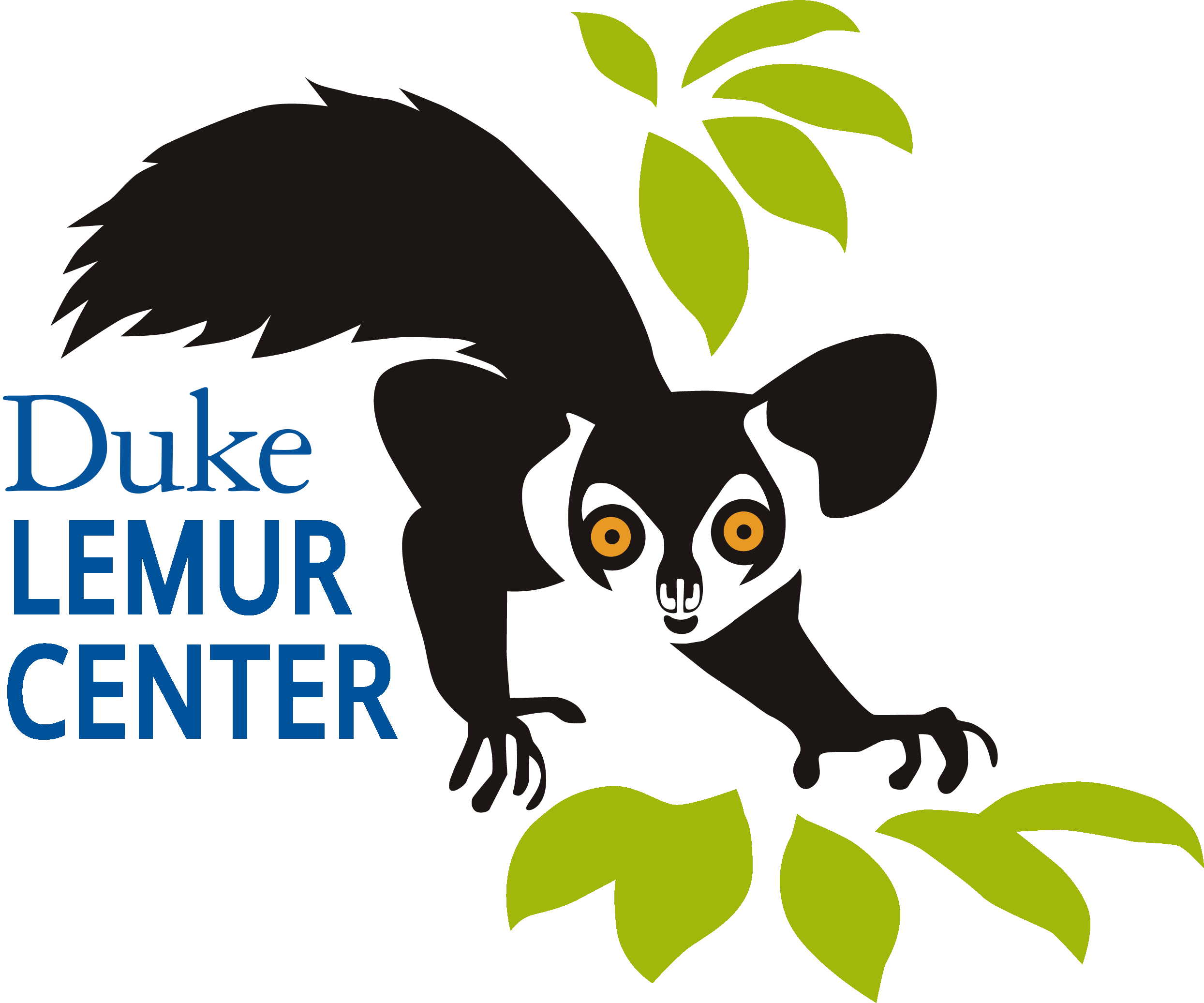- Discover: Research
- Research Overview
- Research Philosophy and Themes
- Why Study Lemurs?
- Anna Borruel Codina Center for Lemur Medicine and Research
- Museum of Natural History
- Positive Reinforcement Training
- Science Outreach and Communication
- Information for External Researchers
- 50th Anniversary Scientific Symposium
- Husbandry Guidelines
- Engage: Education
- Protect: Conservation
- Get Involved
- Support Us
- About
- Schedule Visit
- Donate
Search Our Site
The time is now
Lemurs are the most endangered mammals on Earth

about
Duke Lemur Center
Founded in 1966 on the campus of Duke University in Durham, NC, the Duke Lemur Center is a world leader in the study, care, and protection of lemurs—Earth’s most threatened group of mammals.
With more than 200 animals across 13 species, the DLC houses the world’s most diverse population of lemurs outside their native Madagascar.
Our Mission
To advance science, scholarship, and biological conservation through non-invasive research, community-based conservation, and public outreach and education.


Facebook Feed
Five-month-old Toulouse Goose climbs a piece of bamboo in her free-ranging room 🎋
Did you know that fat-tailed dwarf lemurs born at the Duke Lemur Center are named after birds? Toulouse Goose is the only one of her siblings named after a goose; fellow triplets Bufflehead and Smew and older siblings Eider and Wigeon all share their names with types of ducks. The naming theme extends to extinct birds, like Elephant Bird and Dodo, as well as more common birds, such as Raven and Osprey 🦅
What bird name would YOU give to a fat-tailed dwarf lemur?
📸: David Haring ... See MoreSee Less
2 CommentsComment on Facebook
Peregrine Falcon (Perry for short).
Happy Duke Family Weekend! 💙
We're so excited to host so many Duke students and families on tours this weekend! Our tours are completely SOLD OUT for Friday through Sunday, and we're looking forward to sharing our love of lemurs with hundreds of guests over the next few days 🥰
Go Blue Devils! 😈
📸: Sara Nicholson ... See MoreSee Less
3 CommentsComment on Facebook
❣️❤️❣️❤️❣️❤️❣️
Aww we wanna come see you tomorrow!!! No tickets a available
So cute
Just how small IS a gray mouse lemur? 🤔
It can be hard to wrap your brain around the fact that this tiny primate is more closely related to humans than to mice! Gray mouse lemurs are the second smallest primate in the world, only dwarfed by the critically endangered Madame Berthe's mouse lemur. They stand at only about three inches tall and weigh about as much as a single stick of butter when fully grown (and only about as much as a wedding ring when first born!) In this photo, gray mouse lemur Taro helpfully stands between two objects for scale—a fresh persimmon and a rubber ducky. The rubber ducky is a form of novel object enrichment and was placed in Taro's enclosure as something new and exciting for her and her groupmates to investigate 🦆
📸: David Haring ... See MoreSee Less
11 CommentsComment on Facebook
Wow
❣️❣️❣️❣️❣️❣️❣️
❤
View more comments
Happy #TongueOutTuesday from ring-tailed lemur twins Elisabet and Doris! 😋
If there’s two things these tiny twins are known for, it’s chowing down enthusiastically on any and all snacks and making the silliest faces while doing so. After voraciously devouring their meals, the six-month-old girls like to snuggle up for nap time with their family—scroll to the end to see the twins with dad Randy and mom Sophia, and a “like mother, like daughter” photo of Elisabet and her momma 🥰
📸: Keeper Sarah K. ... See MoreSee Less
9 CommentsComment on Facebook
My favs!! Have a lemur day! 💛🧡💚🌻
They are precious
View more comments
Which Duke Lemur Center couple are you? 💕
Tag your partner, your bestie, or any other important person in your life! 😍
📸: Sara Sorraia (Randy & Sophia); Sara Nicholson (Halley & Bruno); Rhiannon See (Fady); David Haring (Grendel, Gisela & Rupert, Raven & Domestic Chicken) ... See MoreSee Less
1 CommentComment on Facebook
What an amazing post
Photos from Duke University's post ... See MoreSee Less
2 CommentsComment on Facebook
Bears hibernate for long times too.
Whether handling infants, handing out food, or preparing delicious enrichment, our staff go through LOTS of gloves and cleaning supplies! 💕
www.amazon.com/gp/registry/wishlist/373AW0NFW38GY/ref=nav_wishlist_lists_1
Want to help the Duke Lemur Center keep the nearly 250 primates in our care happy and healthy? Take advantage of today's Amazon Prime deals and discounts and send items from our Amazon wishlist directly to our staff—including disposable gloves, cutting gloves, bleach, and detergent—that go into the behind-the-scenes care for the world's most endangered mammals! 🤩
📸: Sara Sorraia (1); David Haring (2); Abby Flyer (3) ... See MoreSee Less
5 CommentsComment on Facebook
So jealous of you guys! They are my absolute fave!
The babies make me melt
View more comments
Ring-tailed matriarch Liesl and her troop enjoy the last few warm days of autumn ☀️
17-year-old Liesl leads a small troop of ring-tailed lemurs as they free-range in a nearly 16 acre forest enclosure. On sunny autumn days, Liesl and her family can often be found "sun worshiping," a term for the way that lemurs sit upright and sun their bellies. This is a form of thermoregulation, helping them stay warm on cooler days by heating up their bellies in the sunshine. Matriarch Liesl is identifiable by her orange radio collar, which dominant females of free-ranging troops will wear at the DLC to allow staff to locate the lemurs in the woods. If we can find Liesl, we know that the rest of the troop will be nearby! ✨
📸: Sara Nicholson ... See MoreSee Less
6 CommentsComment on Facebook
They are a gorgeous family. 🥰🥰
🤭😁🤭😁🤭😁🤭
i love lemurs ♥️
View more comments
Not all blue eyes look the same 👀💙
Blue-eyed black lemur pair Brady and Malala free-range together in their forest enclosure. Brady has arguably the brightest blue eyes in the DLC's colony of this critically endangered species, while Malala's are so pale that they almost appear white in photos. Maybe the blue just stands out more starkly against Brady's black fur!
Fun fact: blue-eyed black lemurs are the only lemurs with blue eyes, and one of the only primate species with blue eyes 🤩
📸: David Haring ... See MoreSee Less
8 CommentsComment on Facebook
Cute
💖💘❤️
We are lucky to have a pair at our zoo, perhaps because our retiring Curator of Primates was once employed at the center.
View more comments
How are lemurs laying the groundwork for interstellar travel? 🚀
➡️ today.duke.edu/2025/10/how-lemurs-are-laying-groundwork-interstellar-travel
In a newly published article in Duke Today, DLC researcher Dr. Ana Breit discusses her hibernation research with fat-tailed dwarf lemurs and how our tiny relatives might help scientists develop a form of human hibernation for space travel. Fat-tailed dwarf lemurs, who hibernate at tropical temperatures, could offer a solution to preserving cognitive function during long-term unconsciousness. Collaborating with researchers in the United States and across the ocean in Madagascar, Dr. Breit hopes that the DLC's non-invasive research can yield new breakthroughs in this interdisciplinary journey to the stars ✨
📸: David Haring (lemurs); Abby Flyer (graphic) ... See MoreSee Less
1 CommentComment on Facebook
Hope they never go to space. 🥲